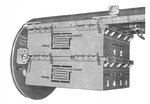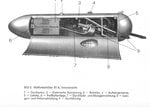Tony Williams
Airman 1st Class
That I don't know, but I'm certain that the Luftwaffe guns were electric primed: every source I know says so, and every cartridge I've ever seen is electric (the electric primer is easily recognisable because it has an insulating ring within it). There are a few of the experimental percussion ones in other collections, but they are very rare.¿¿Huh...???? Tony are you sure about this ?, I saw several pics of german soldiers using former Luftwaffe MG 131s in the ground role, that is with a wooden or metal stock. If all the Mg 131 were electricallly primed as you said....how the gun was powered ?
To convert an electric-pimed gun to percussion would not be a simple task, even if the ammo were available.
Tony Williams: Military gun and ammunition website and discussion forum












